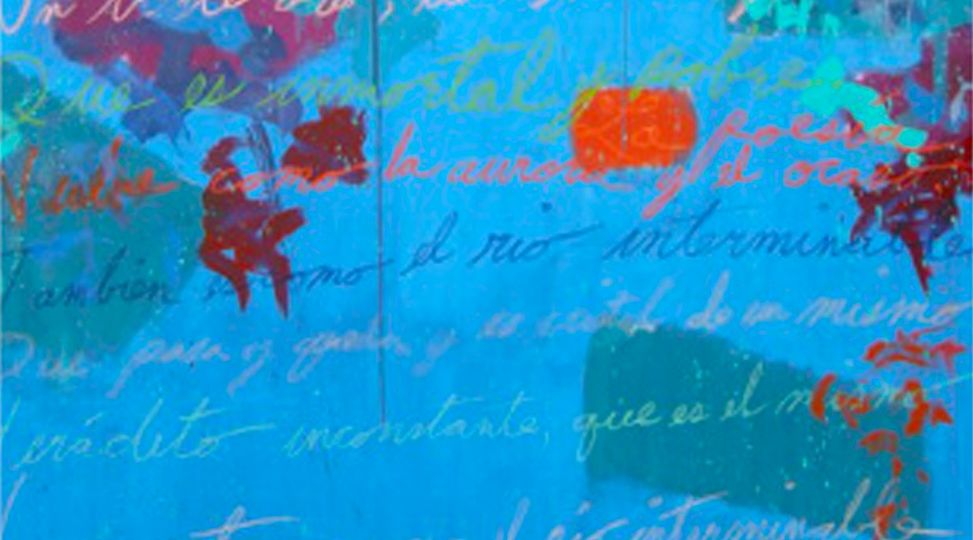
Freud & Jung – Written Revelations
Personality Attributes in Freud’s Handwriting'
, December 1, 2011
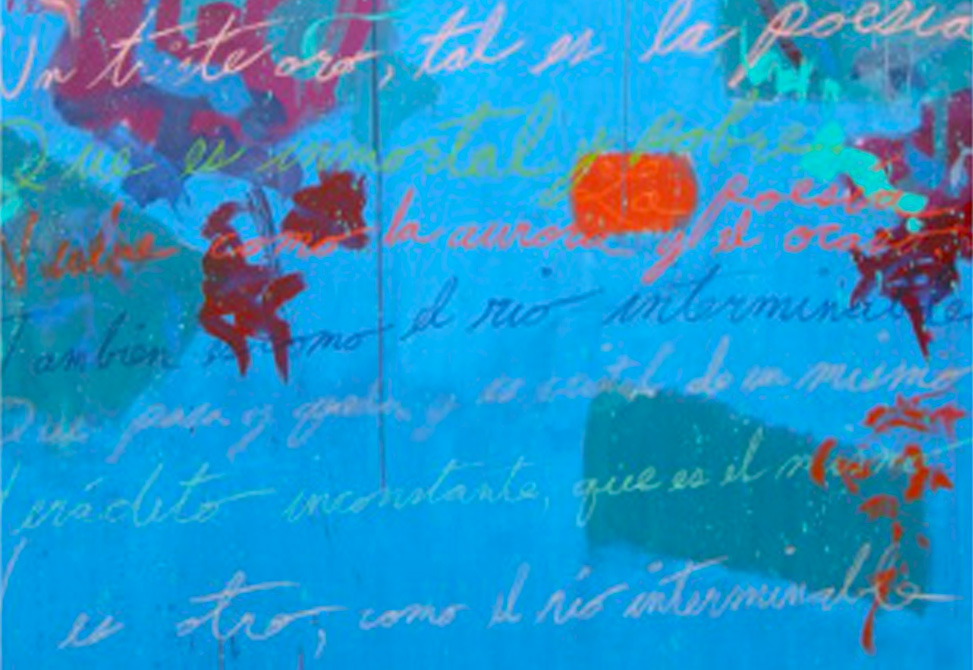

It should be noted that Freud used the then-current style of gothic script, which was distinguished by sharp angular connective forms rather than the round form of the Latin script that Jung employed. Long, downward extensions are also more frequent in the gothic script. While Freud may have been culturally conditioned toward this somewhat cumbersome gothic style, it may also have appealed to his character more than the more balanced, easy-going Latin script. The gothic model taught that the zonal extensions should be about two times the height of the middle zone, to create an approximate zonal proportion in all three zones of 2: 1: 2. Today’s model proportions are approximately 1 ½ : 1: 1 ½ . In graphological terms, this suggests that the tensions between the unconscious (lower zone) and the intellectual (upper zone) were greater during Freud’s time than today. And, because the middle zone correlates with the ego and the present, a proportionately smaller middle zone among Freud’s contemporaries suggests that they were less concerned with day-to-day reality than we are today.
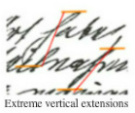
Freud’s writing has an emphatic lower zone (id) indicating a strong dependency of his psychic processes on bodily states and processes. The shorter upper extension suggests only a slightly developed tendency toward sublimation, the ability to transform unacceptable impulses into something positive.
It should be noted that handwriting changes over a lifetime. Freud’s writing over time had some changes, to be sure. The height of his upper zone varied during the course of his life, according to these handwriting samples. The tendency to sublimate was at its lowest during the middle years of his life as seen in his sample at 56 years old where the upper extensions are very short.
The inclination toward large, wide-ranging movements is triggered by activity of the brain stem. Extensiveness, therefore, is a primary indicator of a brain stem script. The long lower extensions of Freud’s handwriting indicate a person motivated by the physical — instincts, drives, affects, and feelings — the sphere of experience and behavior that is governed by this most primitive area of the brain. Yet Freud’s writing is also very narrow, especially for the size of his letters, and his slant is extremely right-leaning. These two attributes represent strong opposing forces within him: There are clear indications of self-restraint and repression (narrow, with some retracing) yet there is a passionate emotionality (variability in letter size plus strong pressure and right slant).
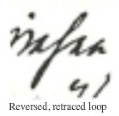
Meanings associated with this are extreme repression, frustration, resentment, and hostility. In evaluating something like this, one would ascertain how often this is found in this letter and then would apply that to the meaning: If it is found in about half of the ‘f’s,’ then about half of the time the person would experience the psychological qualities associated with it.
Indicators of Freud’s Typology
A number of imbalances and inconsistencies are present in his writing—variation in zonal extension, spacing, and size—indicating that he was defended and fearful. There are also contradictions, such as very narrow letters and narrow line spacing, representing restraint, which work against the relative size of his middle zone height, suggesting large ego needs. These contradictions suggest radical conflict between willpower and feeling, between a desire to contain himself and a desire to let himself go, and make typing difficult.
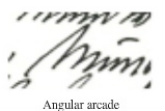
Freud’s letter connections show the ‘angular arcade.’ This type of connection suggests a personality with enormous strength of purpose and high conscious control of all psychic processes. This formation also suggests Introversion.
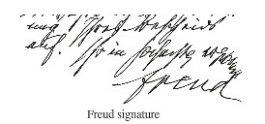
With regards to the J/P scale, there are graphic indicators present for both. Individuals who have great irregularities in the writing aspects of size, baseline of writing, and margins would likely report as ‘P’ on the Myers-Briggs J/P dichotomy. While Freud has irregular size, he does maintain a somewhat straight left margin and somewhat level baseline. These factors are neither too rigid (J) nor too irregular (P) but one couldlean toward the latter.
In sum, Freud’s handwriting reveals clear evidence of Introversion and Sensing, with some Feeling attributes and a slight indication of the irregularity that points toward ‘P,’ but it also shows considerable internal conflict.
Personality Attributes in Jung’s Handwriting
Where Freud’s writing is full of ambiguities on almost every level, Jung’s is much more in harmony. Thus they prove challenging to analyze for opposite reasons: Freud’s writing is very complex and contradictory; Jung’s very simplified and balanced.
The greatest difference between the two is the spatial arrangement and zonal balance in Jung’s handwriting—it has more space between letters, words and lines. Jung’s script shows the same rapidity seen in Freud’s, indicative of rapid mental processing. However, Jung’s is much more relaxed. You get a sense that you can ‘breathe’ when looking at Jung’s writing. The rigidity of Freud’s handwriting, on the other hand, suggests rigidity in both thinking and in emotional response.
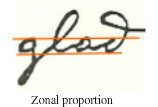
Indicators of Jung’s Typology
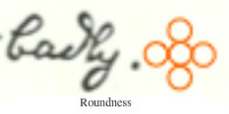


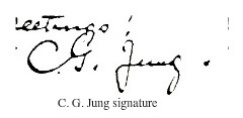
Overall Jung’s handwriting shows Thinking and Intuition, with Introversion primary. Many of Jung’s upward extensions have full loops, which indicate an active imagination, and one whose thinking is characterized by pictures and symbols. His consistent size, level baseline, and straight left marginsuggest that he would likely report as ‘J’ on the Myers-Briggs J/P dichotomy. Over all, handwriting indicators suggest INTJ preferences.
In sum, Freud’s script suggests a person who is all-consuming (notice how his writing overtakes the page due to overlapping spacing), volatile, and narrow-minded. His dominating will was the driving force in him and there was much duality. Jung’s script suggests clear-headedness (objectivity) and independent thought (notice the size, organization, spacing and clarity), and indicates a person with ambition, confidence, and the desire to communicate clearly.
References
Nezos, R. (1986).Graphology: The interpretation of handwriting, Volume 1. London, England: Scriptor Books.
Roman, K. (1952).Handwriting: A key to personality. New York, NY: Pantheon.
Saudek, R. (1978). The psychology of handwriting. Sacramento, CA: Books for Professionals. (Original work published in London 1926)
Schuetz, L. (2011, May). Partnering type with graphology. Personality Type in Depth. Retrieved fromhttps://typeindepth.org.
Schweighofer, F. (1979). Graphology and psychoanalysis: The handwriting of Sigmund Freud and his circle. [S. Ray, Trans]. New York, NY: Springer.
Storr, A., Stevens, A. (1998). Freud & Jung: A dual introduction. New York: Barnes and Noble.
Sonnemann, U., & Mittelmann B. (1950). Handwriting analysis as a psychodiagnostic tool: A study in general and clinical graphology. New York, NY: Grune & Stratton.
Teillard, A. (n.d.). Attempted analysis of Sigmund Freud’s handwriting. Translated from the French by Edward B. O’Neill.
Wolff, W. (1948).Diagrams of the unconscious: Handwriting and personality in measurement, experiment and analysis. New York, NY: Grune and Stratton.
Wolff, W. (1943).The expression of personality: Experimental depth psychology. New York, NY: Harper Brothers.
Header Image
James Walton Fox, “Masonville (Ars Poetica),” 2009, Courtesy TRIA gallery, New York


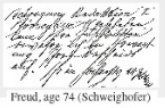
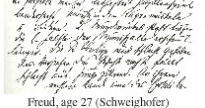
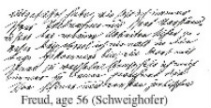
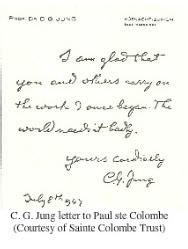


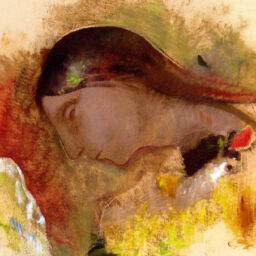
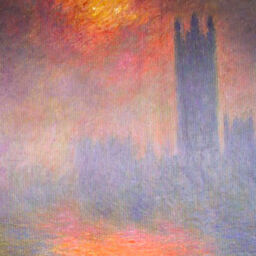


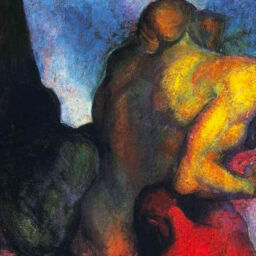
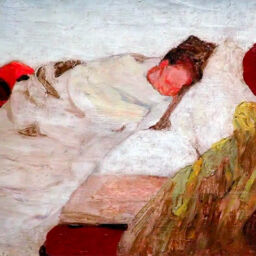
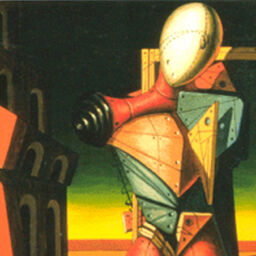
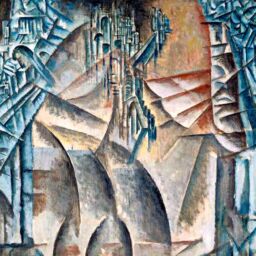


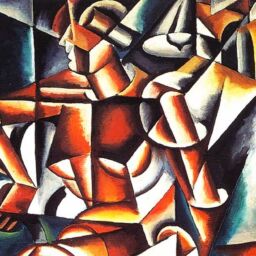
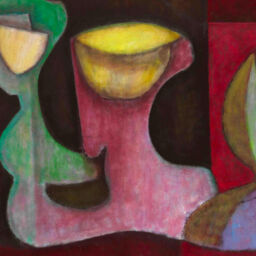
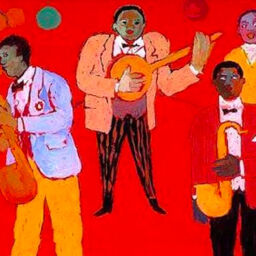

I know this is very late, but more food for thought on Jung’s preferences…
Jung declared his own type in a discussion with a Miss Hincks on May 18, 1925 during a seminar. He said, “As a natural scientist, thinking and sensation were uppermost in me and intuition and feeling were in the unconscious and contaminated by the collective unconscious.”
As soon as I came across that, preferences for ISTP made perfect sense. In my mind, the ISTP is the mechanic’s mechanic, a mechanic par excellence among other typologies, if you will.
Since Jung was first and foremost a hands-on practitioner, it’s easy to see how natural it would be for him as an ISTP to turn the flow of sensing information on and off in virtually any setting with a patient.
Extraverted sensing would capitalize on every present moment with a client, and then, in private, his introverted thinking framework would provide the backdrop against which he could match his data and continually refine his working theories, ad infinitum.
As years went by, tertiary introverted intuition would develop and become more useful and reliable.
From an objective standpoint, he could view such interactions in a clinical, or “machine-like” fashion, thereby minimizing any feeling bias, much as an ISTP technician might approach a malfunctioning machine without any hint of emotional regard for an inanimate object.
This is not to imply that he had no feeling, but, that rather, it was natural for him as a scientist to approach a subject in that manner.
Over the years, he must have become quite the formidable analyst.
I would have loved to have spent time with him in person, and I’m sure I’m not alone in that regard.
See Lecture 9 in Analytical Psychology: Notes of the Seminar given in 1925 by C.G. Jung, edited by William McGuire, page 69.
Thanks,
I don’t know that I have any “quibbles” with your response, in the sense that I acknowledge all that about truly “pure” types being impossible, and so I’m not able to interpret your response as much of a quibble with what I’ve written so far. Jung himself stated a truly pure type would belong in a lunatic asylum. Which is why I threw in the key word *relatively* pure type.
That said, to spell out what I was saying a bit more, I do think Jolande Jacobi didn’t add the word “relatively,” but that she ultimately meant the same I do: which is that there are differences in how mixed and how sharply defined by one function people get, rather than that people are actually 100% pure types ever. I imagine examples like Kant, Pauli, etc are good ones of people who didn’t exactly step out of the thinking type mindset much, and certainly couldn’t be called pioneers in the realm of the irrational the way I’d call Jung and von Franz, and again this is to me one of the greatest selling points of the Jungian school of thought.
As far as whether such people (Kant, etc) are healthy, well I’d say there’s a difference between being *more* defined by thinking than a strong admixture of thinking and intuition and repressing intuition/sensation enough to the point of pathology. In other words, if one’s natural disposition is somehow much more to thinking, less sensation, intuition, and feeling, then intuition or sensation may be things one works on more on the side, to nurture the whole personality, than exactly one’s selling point.
On von Franz’s type, I cannot conjecture intelligently and defer to what I’ve read, and my conjecture is von Franz thought she and Jung were examples of the characters she wrote of in her book who had intuition and thinking almost equally good, but where looking to the inferior function helps determine their main dominant function. To this end, I suspect she thought she had introverted thinking dominant and extraverted feeling inferior.
I forget how definitively I’ve seen this, or if it’s just vague hearsay, but the best reference I can give right now is the In Memoriam available online by Daryl Sharp, following von Franz’s passing away, where it writes of von Franz’s publicly confessed inferior feeling function, and a hint in Lectures on Jung’s Typology, where she writes of the contrast between the feeling type, who puts a bit of ego into feeling judgments always and the undifferentiated feeling of the thinking type, commenting how she’d never have stood for this kind of behavior, and would rather not eat!
That said, we have to note that you’re typing von Franz likely using the Beebe model, whereas von Franz was probably using the classical Jungian model based on four, not eight (where it was acceptable to have both introverted thinking and introverted intuition as your main two). I imagine you have a different take, and might read von Franz’s extraverted feeling from the standpoint of a function-attitude 7/trickster.
Regarding how Jung has been somewhat ignored, I honestly think that is more or less exactly my point, which is to say that he stuck to his path, which involved a greater embracing of the irrational/intuition than most traditional academic psychology ever allows for, and that readers of Jung should keep an open mind (which Pauli did as well), else they won’t actually find what the man was on about before dismissing what he said.
I have some minor quibbles with your post that I think are worth surfacing.
First of all, if one reads “The Jung-Schmid Letters,” those letters pre-dating the publication of “Psychological Types,” they will encounter some of the evolution of Jung’s thinking about the types. It turns out that Jung’s original type model had only two types: the introverted thinking type and the extraverted feeling type. It was a two-type system. Jung nominated himself to be the introverted thinking type and Schmid to be the extraverted feeling type in their correspondence (chances are that both of them were wrong). Shades of this original model lingered for a long time, and may still have been present in Jung’s thought somehow toward the end.
Jung himself provided the sequence of discovery of the functions, noting that the irrational functions were discovered last, and he credited Maria Moltzer for bringing the discovery of intuition.
As far as there being “pure” types, Jung himself stated unequivocally that there was no such thing as a pure type, and that type descriptions are “dead.” If one compares oneself against a written description they are comparing themselves to a “corpse.”
All of the descriptions Jung provides have a strange quality. As you note about the introverted intuition depiction, there is zero judgment present. John Beebe asserted that Jung portrayed all the functions in the most horrible, pathological way, so we probably shouldn’t take them at face value as representing any human person. They are purely theoretical.
However, Jung seems to be saying that one shouldn’t identify with any type per se – if we are too one-sided in our use of the functions then we are psychologically unhealthy. He wrote, “Each of these types represents a different kind of one-sidedness.” He goes on to say, “This one-sidedness would lead to a complete loss of psychic balance if it were not compensated by an unconscious counterposition.” In this way Jung accounts for all of the functions in an individual psyche – an idea commonly left out of most discussions about the MBTI.
I agree with you that von Franz mostly likely had INTJ preferences as well. I wonder whether she (and perhaps Jung) saw themselves as thinking types simply because they believed they used that function so consciously? (I’m speculating here, partly because it matches my experience that most INTJs like to consider themselves thinking types and not intuitive types or mystics.) Jung certainly made hay with his thinking function on behalf of the psychoanalytic movement — so much so that Freud is considered the Father of Psychology and his name echoes in the halls of the Academy, while Jung is barely acknowledged as a footnote. What irony, eh?
I think the assessment of why Jung was skittish about identifying as an intuitive strikes me as likely, too. I am pretty sure he actually has said at some point that he needed to preserve his reputation as a scientist. It’s unclear if, when he identified himself as a sensation type, he was protecting this, but the quote does run “as a natural scientist…”, so presumably one can make a certain inference there.
However, there’s also a bit of a secondary story to this, which is that the modern concept of “intuition” and what it entails seems to have broadened in a different direction from what Jung associated to the function originally.
Going by the modern schools of thought, I don’t think NiTe is considered incompatible with a scientist orientation, and going by less functions-theoretic interpretations of the MBTI, like Keirsey, I’d think INTJ are some of the likliest scientists out there.
But in Jung’s original concept, which he explains in Tavistock, intuition was something he said, as a man of intellect, he would almost rather not exist, but he has to face the facts that there are such things.
I don’t think Jung associated intuitive-thinking with much of the classic scientist or even philosopher at all, basically (and his original self-diagnosis, whether genuine or not, as a sensation-thinking type, was also in line with this).
As to the best resolution of all this, I’d suggest (or at least I found it helpful) Jolande Jacobi’s account of typology, where she notes there’s a difference between the relatively pure thinking type and the person more in between thinking and another function (like intuition). Of the first, Kant was given as an example, and I imagine Jung and von Franz likely are more of the in-between variety, in that they seriously ventured into the domain of the irrational while being intensely thinking-oriented as well. Arguably that (the acknowledgement of the irrational) is one of the biggest things distinguishing the Jungian school, and why Pauli, when he was associating with Jung and von Franz, had a conflicted sense of how much he can associate with them while preserving his reputation — due to his more exclusively thinking type/rationalistic school.
We don’t have to look far for examples of relatively pure intuitives, namely people Jung wrote in Psychological Types had an aesthetic orientation, and lacked judgment for the most part.
I seriously doubt Jung or von Franz was anywhere near one of these, so even if one of them was a dominant intuitive, it was a certain variety of dominant intuitive that could probably be argued as a thinking dominant depending on how one saw it.
So my best conclusion is they were in-between, allowing that perhaps indeed, Jung had intuition dominant (and he *certainly* could have it dominant by the more modern schools of thought on what intuition is). While von Franz does state in Lectures on Jung’s Typology that Jung’s experience building castles highlights the problem of the fourth function, thus marking him as an intuitive dominant, she’s also truer to the spirit of this interpretation I’m giving, of calling some people more in-between, because at the end of the day, she’s also been filmed giving an interview (on youtube) where she refers to Jung as having the same type as herself – a “Thinking-intuitive type”, suggesting that, despite her self-diagnosis (I believe) as having fourth function feeling rather than sensation, she ultimately saw their types as more similar than different, and characterized by some combination of those two functions.
FYI: I suspect Jung was skittish about identifying his type pattern because he wanted to be seen as a “scientist” and not a “mystic.” Yet von Franz and his secretary/analysand Aniela Jaffe both make comments in their published works about Jung having inferior sensation, and somehow I don’t think they would have gotten it wrong given how close they were to him. Furthermore, I met a man in London a few years ago who knew Jung personally (Stephen Abrams; their correspondence is published in the second volume of “Letters”) who said Jung told him to his face that they were both introverted intuitives. Last, if you try to diagram what Jung actually said in that online interview, you’ll find that it doesn’t follow a sequence that leads to any obvious type pattern — people have merely *interpreted* him to say his pattern conformed to INTP preferences rather than stayed loyal to the facts (although Jung did have a recurring habit of calling himself a thinking type, and once called himself a sensation type — although rest assured he never called himself a Feeling type).
With respect to Freud, Jung observed that his *psychology* was extraverted, not the man himself. Somewhere, Jung also remarked that Freud had very good feeling, and that he used that to good effect to cure his patients. I believe it was von Franz who affiliated Freud with sensation and feeling…. so ISFP is his likely type pattern. (Given his unswerving loyalty to the sexual libido theory, doesn’t it make sense?)
In summary, for Jung — INTJ preferences, and for Freud — ISFP preferences. Coincidentally, I have Beebe on record in agreement with both of these type diagnoses.
I’ve been practicing and teaching graphology for over 40 years. I studied with my father Dr.A. Naftali. When I was in my first year my father showed me a handwriting of a man and asked me what I could say about him. I answered that he is a terrible person, fit to work with animals rather than people. That he is egocentric and obsessed with instincts/sex/material things. It turned out that it was Freud’s handwriting.
Many extroverts are at variance with reality…….take another look at things……many can still be successful, healthy, well positioned in society and still be at ‘variance with the real reality.”
Thank you Mark or should I say Dr. Mark.
I gonna share your answer with the online MBTI community on youtube and quote you. Because I want to educate others the insigth this knowledge will bring. The advantages knowing the archetype and its associated function. I am just making the best out of the online resources I have basically. And have read and understood them all, but its just alot of unanswered question as not many know about this insigth.
So I am grateful for this site and your help, and how it helps us others that have limited access to this knowledge.:)
I take Beebe’s archetype associations with particular function-attitudes’ positions in the sequence of preferences as a ‘rule of thumb,’ not inexorable psychic ‘law.’ —As statements of tendencies, which are probably the result of the ‘group dynamics’ between the role players involved (the function-attitudes) and their innate relative ‘positions of power’ (energies). And though I don’t know whether he would agree with how I’m saying it, I know that Beebe does not view his model as rigid.
I also find that for the more unconscious function-attitudes (usually #5-8), the archetypal characteristics tend to be less distinct and easily identifiable. And this fits with Jung’s descriptions of the unconscious: that the less “differentiated” an element of the psyche is, the more entangled it is with the rest of the unconscious.
It is important to keep in mind that the function-attitudes carry their particular archetypal energies only to the extent that they are unconscious. These roles are innate ‘default positions;’ but the more we bring each function-attitude into consciousness, the looser the grip of the archetype, and the more we can use that function-attitude in other ways. This might apply to the “stronger” Te in your example.
Having said that Beebe’s archetypal sequence is ‘only’ a guide, however, I should add that I, and the others I know who have a fair understanding of the nuances of the model have found the function-attitude-archetype framework to hold up with remarkable consistency and to enable great insight when applied with individuals. So I always presume that the model is correct and applicable; while reminding myself that it is not something that can be universally applied in a simplistic, formulaic manner.
I was posted this question on youtube.Does anyone know the answer?
Do you think it’s possible for cognitive functions to adopt irregular archetypes according to how someone has been conditioned? For example an INTP who has developed stronger Te than Fe; would the Te adopt a different role or would it still exist in accordance to the sequential order? Also what do you think about breaking out of the archetypes, as in is it possible to evade the childish tendencies of the auxiliary or the anima’s projections via development, or is it more or less innate?
Hi Mark, and thanks again for saving my day.
The point where u said that T factors in emotions that’s pretty much how I experiences Ti, the emotions becomes one of the variables of criteria in which I include in the decision among many others. Would this then also be for Te? It seems like the Feeling cannot escape the emotions from the decision making, even perhaps the root of it before considering the external others for Fe and the internal values Fi. This would mean I guess that Fe would base their decision on the emotional affect of other, whereas Fi would base their decision on the emotional affect of their values. Have I understood it right?
Either way the person would still make this evaluative judgment based on the emotional potential. The question really becomes for me is emotions a product of interplay of the function, or the root cause of the possiblity in the ability to use the cognitive function or a seperate entity. If so the product of that emotions would still be added to the decision making process, creating a loop constantly adding to the decision making process therefore constantly influencing it. And even at times, I think emotions becomes a short cut in decision making where u don’t longer need to use the function perpective in energy draining way. But rather as a felt potential of choosing one over the other.
I do admit John Beebe does bring the attention of the emotion into the picture, but I’m afraid just as an arhcytyple potential through complexes. This would also mean that emotions is something that is really at work only when the archytypes are being triggered. Leaving emotions away of the picture before that. The archytyple enegery in which surrounds the function would just account for the emotional perspective of and actor (parent, or child) I guess, but not wehther one is sad, or angry considering the interplay of the function. Leaving out emotions becomes I guess leaving out the gestalt. But like u said its big topic.
But I think u answered my question 🙂
999Grenneyes,
You’ve broached a topic that would require a whole article—maybe a book—to cover adequately. But I’ll try to give you a nutshell version of my take on it, including some key names and terms so you can pursue it further—with apologies for drastically oversimplifying.
Emotions are not central to the personality type model, as we know it through MBTI theory. The model focuses on the different ways that people process information. (This is not to say that emotion isn’t important; only that it’s not the focus of this particular model.) It does deal with emotion to some degree, but primarily as information. People with a preference for thinking tend to treat perceived emotions as data-points to objectively factor into their assessment, but to try to not let emotion influence the decision-making process itself. People with a preference for Feeling tend to fold the “qualitative” aspect of emotions into the process itself, so this positive or negative affect is a more central part of their evaluative approach to the decision-making. I.e., the ‘good” vs. “bad” valuation clearly includes an emotional factor.
Many who use this model, layer “emotional intelligence” over the Myers-Briggs framework—separate assessment tools, looking at overlapping aspects of the psyche, combined to give a more complete picture.
A great deal of our habitual emotional reaction patterns can be ascribed to how real-life circumstances fit (or don’t) with our internal notions of how things “should be;” and C.G. Jung did bring this into the psychological type picture, to some degree, in terms of “archetypes,” which he described as complexes of emotional energies. Many Jungians have expanded upon the archetype aspect of his work; but the MBTI branch of the Jungian tree had mostly ignored it, until recently. Psychoanalyst John Beebe has now proposed a framework in which the functions and attitudes of typology are melded with these “emotional energies” and many type users have embraced his expansion of the model, in large part, because it does bring emotion squarely into the framework of psychological type. You can find many references to Beebe’s work by using the search function on this site.
How does feelings as emotions manifest in different function. I cannot see really how emotions is not been explained considering the amount of influence it have on our decision making. I have some ideas, but want to know from an analyst point of view how emotions as feelings plays out in our decision making process?
Please answer 🙂
[…] An entire book — see picture next to the title — was devoted to analyzing the analyst’s handwriting, and I think it’s safe to assume that Geisler is a Freud fan, too. But here’s a Jungian who uses Freud’s handwriting to diss him: […]
[…] on typeindepth.org Share this:TwitterFacebookLike this:LikeBe the first to like this […]
In researching an article for a medical publication several years ago, I was shocked to discover the extent of Freud’s cocaine abuse, in addition to his rampant over-prescription of the drug to his friends and acolytes (with fatal results in at least one case).
In later life he wrote about the possibility that he may have projected some of his own psychological demons onto his early patients. The famous ‘Dora’, whose case as reported by Freud helped to make his fame and fortune, sacked him after only 11 weeks. A young woman with remarkable presence of mind, she strongly objected to Freud’s suggestion that she should rather be flattered by the attentions of a pedophilic older man, a Jew as Freud was.
Freud was under great pressure not only to support his family but also, more politically, to minimise ‘the Jewish threat’ that was then infecting Europe. It would not have done to expose a Jewish pillar of the community as a child abuser. It seems that right from the start, psychology has ever been useful as a political tool and a weapon of suppression of the more vulnerable and/or inconvenient people in society.
It has to be noted that the medical establishment of the day was highly skeptical and even denigratory of this young upstart’s claims to psychological expertise – as well they should: prior to taking up psychology, Freud’s career was largely concerned with investigating the spinal neurology of fish.
These facts and more are well-documented and even partially discussed by Freud in his later writings. Yet this man has been lauded and lionized for his contributions to ‘psychoanalysis’.
In reality, I’d suggest that Sigismund Freud was not really the person he purported to be or whom, rather, certain factions needed him to be.
So, it doesn’t surprise me in the least to read that his handwriting betrays, inter alia, such conflict, ‘drivenness’ and impulsive passion alongside hints of an inferiority complex. In the light of his substance abuse, his unresolved psychological pressures, the threat of poverty and political expediency, how does his handwriting look now?
Ryan,
For some reason, I was not automatically notified that you had posted your Jan 4 comment, so I didn’t know that it was awaiting approval. We certainly do appreciate your participation, and your comment has now been posted. Sorry about the glitch.
-Mark
Any reason why you didn’t approve my comment?
To my knowledge, no scientific study has ever found a link between handwriting and measurable characteristics. Graphology was particularly shamed when Tony Blair left a note at a summit, which was then analysed by graphologists. They ran wild with it. Afterwards it was revealed that the note was not written by Tony Blair but by Bill Gates. Graphology is most likely nothing but superstition.
As for Freud’s type, Jung says extrovert (in the book Jung Speaks). There is little doubt that seen through the matrix of MBTI and the like, Freud is NTJ and a clear Te/Fi user. In that order. In the classically Jungian sense of S/N, Freud might be a sensor, but never a Feeler.
Jung is harder; in the famous BBC interview, he identifies as INTP. I don’t think that’s necessarily right though. Jung could also be INFJ, though not an INFP, because that’d make him an Fi/Te user and all of his work screams with Thinking directed inwards at archetypes and panlogicism, NOT with concrete application.
Thanks so much for this link, Kartik. I had seen this interview many years ago, but didn’t remember a comment on his typology. I happen to be rereading “Psychological Types” this week, so his language is pretty fresh in my mind. Although his comment “And my relation to reality was not particularly brilliant.” seems at first like a he’s saying that he’s not a ‘sensing type,’ I think he’s actually saying that he is introverted. Being “often at variance with the reality of things” would reflect a subjective sense of reality which would often not jibe with “the reality of things.” An extravert, he argues, has no such disconnect. He say’s he’s given the interviewer “all the necessary data for diagnosis;” which we would certainly expect to include a hint about I vs. E. So I’d add an ‘I’ to your ‘NT’ conclusion, leaving only the J vs. P Myers-Briggs dichotomy in question.
I believe I see clear evidence for INTJ in his writing. But as you put so well, there’s certainly a good possibility of a Rorschach test sort of bias influencing me in this.
I tend to see Jung as INTJ, but this whole business of typing other people always has a Rorschach test element for me 🙂 Who knows what projections I’m casting onto Jung, what parts I’m ignoring, what stuff I have no idea about, etc.
As I was searching around to see what others have said on Jung’s type, I came across this fascinating video interview with Carl Jung. This is the first time I’ve ever seen Jung speak, so it was pretty cool to find 🙂
Here is the link to the part of the video where the interviewer asks Jung about his psychological type:
http://www.youtube.com/watch?v=hD-W-1z_qco#t=8m40s
=====
Interviewer: Have you concluded what psychological type you are yourself?
Jung: (laughing) Naturally, I have devoted a great deal of attention to that painful question you know.
Interviewer: And reached a conclusion?
Jung: Well, you see the type is nothing static. It changes in the course of life. But I most certainly was characterized by Thinking, always thought [unclear audio]. And I had a great deal of Intuition too. And, I had a definite difficulty with Feeling. And my relation to reality was not particularly brilliant. I was often at variance with the reality of things. Now that gives you all the necessary data for diagnosis.
=====
Looks like he identifies with NT preferences here.
Marie Louise von Franz in “Lectures on Jung’sTypology” states that Jung never said anything about Freud’s type. He did point out in his books that Freud’s system represents extraverted thinking. M. von Franz had an own personal conviction that Freud was an introverted feeling type, and therefore his writings bear the characteristics of his inferior extraverted thinking. “In all his works the basic ideas are few. With them he has raced through an enormous amount of material, and the whole system is completely oriented toward the outer object.” p. 61
I came across the following summation of Jung’s sense of Freud in “Memories, Dreams, Reflections,” which appears to validate Lisa’s analysis of Freud’s handwriting as revealing “considerable internal conflict.” Jung wrote:”he gave me the impression that at bottom he was working against his own goal and against himself; and there is, after all, no harsher bitterness than that of a person who is his own worst enemy.” (P. 152.) Jung goes on to detail that Freud’s internal battle seemed to be between his conscious insistence upon restricting his paradigm to that which can be dealt with in “concretist terminology,” and thus engaging in a “flight from himself, or from that other side of him which might perhaps be called mystical.”
This is a great article that explores Freud and Jung’s type code without specifically coming to a conclusion. People who, like myself, who do personality type professionally, love to speculate about the two giants of human personality type, Sigmund Freud and Carl Jung. What were their personality types? How would each “come out” if they could go online and take the assessment today? One fundamental thing I recognize is that obviously no one can be sure, since we can’t give them the assessment (another interesting question is, “Could we convince either one of them to take the assessment?”) But I love to speculate.
We know the two men were very different from each other in their whole approach to psychology and life. They were close professionally at one time in their lives, and Freud was Jung’s original teacher and mentor. They had their famous falling out over their understanding of human sexuality and its centrality in the psyche.
Here’s my best guess on their types. Freud was a resounding INTJ. He created the vocabulary and basic concepts of psychology that are largely recognized today. Once built it was a model that he defended until his death as passionately as a religious partisan or person of a political position. That’s why I think he was an INTJ. He was brilliant, intellectual, with an ego on loan from God. The tone of his writings could be dismissive and arrogant. What better description could there be of an INTJ?
Jung, on the other hand had his personal mystic vision, and like Einstein, did more of his experimentation in his head than in a laboratory or clinical setting. He was intensely interested in people and far ranging in his thinking from alchemy to mandalas, to myth and tribal experience. His writings are some of the most interesting and useful in literature, but difficult of expression or organization. INFP are known for the complexity of thought, their comfort with contradiction, their internal inner vision, and interest in how people’s personal universe function. Jung, in my opinion, was a total INFP. Hurry for Carol and Mark who create this forum!
Thanks for your comments, Mark.
In this short article – and given the lack of adequate handwriting sample size- it is difficult to relay all the possible information. This article was a bit longer as I included some interesting qualities of Freud’s writing. These were edited out as it went off topic of “type.” I will post my deleted comments in next months “Train Your Eye” (free) e-mail newsletter.
What I would like the reader of this article to take away is the fact that these two very different men can be readily seen by looking at their very different writing. Freud was driven by his instinctual side (lower zone emphasis) and was emotionally volatile (inconsistencies in size, etc). Jung – though not perfect- certainly was more “integrated” or, type developed.
Lisa
I think you did “miss something,” but it’s understandable –at least in Freud’s case. Lisa summarizes her ‘conclusions’ in the last sentence of the first (Freud) section; saying that she feels she sees evidence of I and S, and would lean slightly toward F and P. She had talked at some length about how Freud’s samples often point in opposite directions –pretty clear indication of inner conflict, but not very conclusive typologically. What she did not explain in the article is that she was working from a very limited quantity of writing samples, in view of the fact that “there are 64 items to measure and assess in handwriting, when evaluating Jungian functions” before claiming confidence. (See her May PTD article.) So although she does tentatively point to I and S and F and P as her hypothesis of Freud’s type, her level of certainty was understandably not such that she felt that she should spell it out as “ISFP,” as that would seem to imply more conviction than she believes her data-points warrant.
She felt like the indicators in Jung’s writing were consistent enough for her to propose INTJ as his type in the second to last paragraph in the article. (This has long been my guess too –but of course that could be the classic ‘the guy is a genius, so he must be like me’ logic.) Though for quite different reasons than with Freud, she explains that Jung’s script too is very difficult to assess type from with high confidence. I’m sure that both of these guys would be extremely challenging to any type professional attempting to verify their instrument-reported types as well.
I hope we did not give the impression that we were presenting a comprehensive or conclusive graphological treatment of Freud’s and Jung’s handwriting and types. That, as I understand it, would take years of research and a book-length essay. We looked at the topic as simply an interesting focus for an exercise, the main purpose of which is to give a sampling of how graphology works vis-à-vis type.
Be well, Mark
P.S. Lisa, I hope I didn’t misrepresent your work here; but assume you’ll jump in and correct me if I did.
So, did I miss something? What do you speculate, deduce, or guess that Jung’s and Freud’s four letter types were. Inquiring minds want to know? 🙂